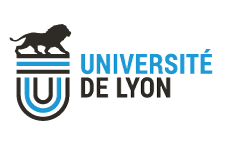CELYA > Actualités affichés en page d'accueil
Séminaire commun LVA - École Doctorale MEGA Tyre-Road Interaction Wolfgang KROPP
le 5 mars 2015 /
Tyre-Road Interaction
Wolfgang KROPP
Full Professor/Deputy Head of Department, Civil and Environmental Engineering, Applied Acoustics, Chalmers University of Technology, Sweden
Invited professor at LVA (February-April 2015)
wolfgang.kropp@chalmers.se
When driving a car we are not always aware of the tremendous importance of the contact between the tyres and the road surface. However the interaction between tyre and road determines many of the main features of tyre performance such as braking, handling, wear, rolling resistance but also interior and exterior noise. The multitude of performance criteria makes the overall improvement of tyres often difficult. For instance improvement for noise might be in conflict to performance with respect to wear. At the same time tyre/road noise is the main source of road traffic noise over a wide range of driving speeds.
For understanding the interaction between tyre and road it is essential to be able to model the tyreroad interaction including the necessary degree of complexity. An introduction will be given to the analysis of tyre vibrations based on a so-called Wave Guide Finite Element model. Different waves as shown in Figure 1 (left) play different role in the transient rolling contact between tyre and road, but are also responsible for instance for sound radiation or rolling resistance.
The main reason for tyre vibrations are the excitation due to the road roughness. The vibrations will lead for instance to sound radiation or to losses in the tyre structure which represent the rolling resistance. The main key for a successful simulation of the tyre-road interaction is to capture the important details of the transient rolling contact between the tyre tread and the rough road surface. An introduction is given to the modelling of the contact.
Finally focus will be put on the mechanisms behind noise radiation and rolling resistance. The understanding of the mechanisms might open for technical solutions with improved tyre performance. Although the results from modelling are promising (see for instance Figure 1 (right) which shows typical results for the modelling of sound radiation) it has shown that today it is not the modelling itself, which limits prediction accuracy but uncertainties in the input data (e.g. material data for the tyre).
Wolfgang KROPP
Full Professor/Deputy Head of Department, Civil and Environmental Engineering, Applied Acoustics, Chalmers University of Technology, Sweden
Invited professor at LVA (February-April 2015)
wolfgang.kropp@chalmers.se
When driving a car we are not always aware of the tremendous importance of the contact between the tyres and the road surface. However the interaction between tyre and road determines many of the main features of tyre performance such as braking, handling, wear, rolling resistance but also interior and exterior noise. The multitude of performance criteria makes the overall improvement of tyres often difficult. For instance improvement for noise might be in conflict to performance with respect to wear. At the same time tyre/road noise is the main source of road traffic noise over a wide range of driving speeds.
For understanding the interaction between tyre and road it is essential to be able to model the tyreroad interaction including the necessary degree of complexity. An introduction will be given to the analysis of tyre vibrations based on a so-called Wave Guide Finite Element model. Different waves as shown in Figure 1 (left) play different role in the transient rolling contact between tyre and road, but are also responsible for instance for sound radiation or rolling resistance.
The main reason for tyre vibrations are the excitation due to the road roughness. The vibrations will lead for instance to sound radiation or to losses in the tyre structure which represent the rolling resistance. The main key for a successful simulation of the tyre-road interaction is to capture the important details of the transient rolling contact between the tyre tread and the rough road surface. An introduction is given to the modelling of the contact.
Finally focus will be put on the mechanisms behind noise radiation and rolling resistance. The understanding of the mechanisms might open for technical solutions with improved tyre performance. Although the results from modelling are promising (see for instance Figure 1 (right) which shows typical results for the modelling of sound radiation) it has shown that today it is not the modelling itself, which limits prediction accuracy but uncertainties in the input data (e.g. material data for the tyre).
- Complément date :
 Jeudi 5 Mars 2015 à 13h00
Jeudi 5 Mars 2015 à 13h00- Lieux :
- Salle M1B – Batiment Saint Exupéry (premier étage)
INSA de Lyon
25 Avenue Jean Capelle
69621 VILLEURBANNE


 Accueil
Accueil Nous contacter
Nous contacter RSS
RSS WebAdmin
WebAdmin